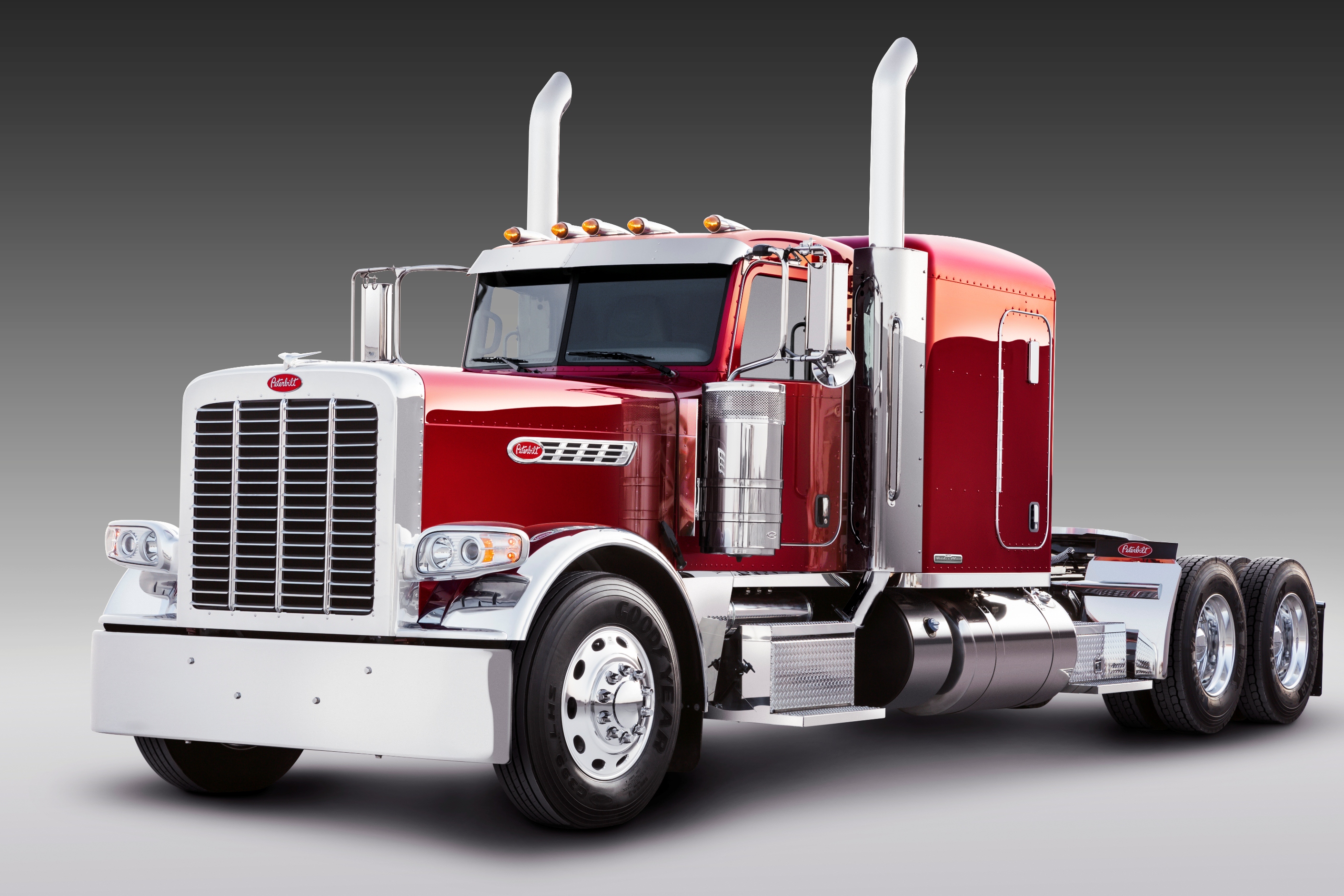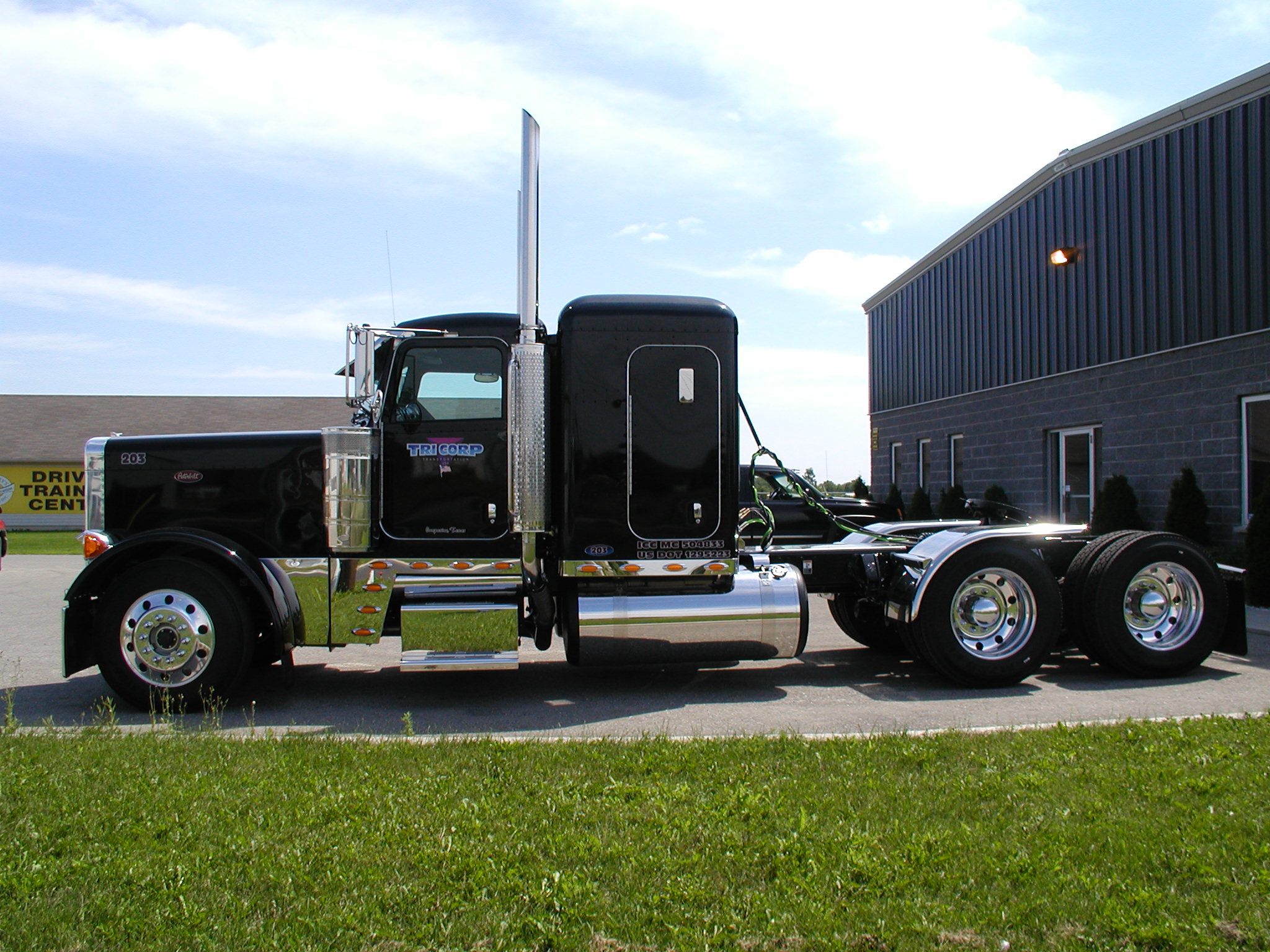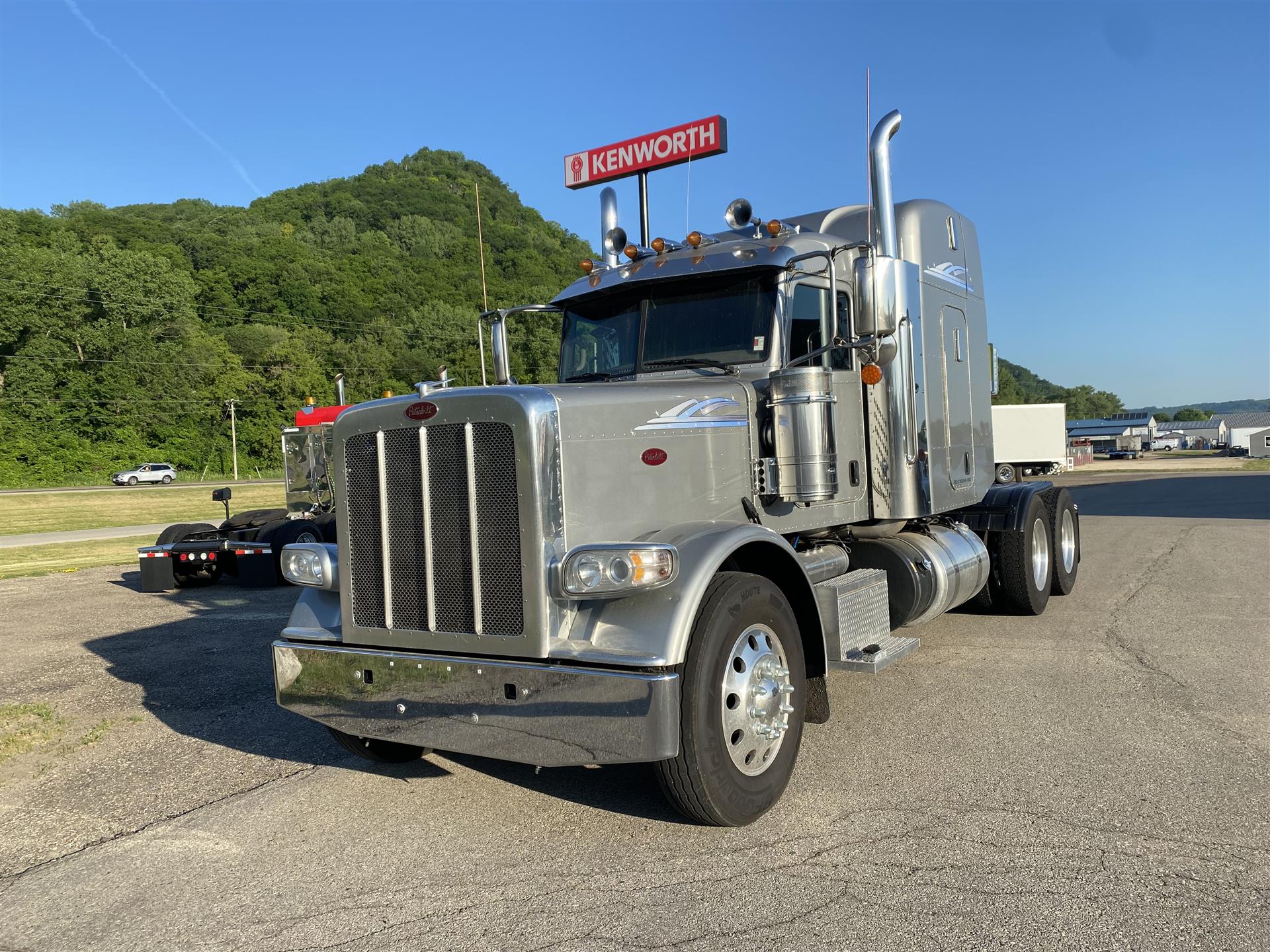Peterbilt Cabover Trucks For Sale: A Comprehensive Buyer’s Guide pickup.truckstrend.com
Introduction: The Enduring Appeal of Peterbilt Cabovers
In the vast landscape of heavy-duty trucking, few vehicles command as much respect, admiration, and nostalgic appeal as the Peterbilt cabover. Defined by their distinctive design where the engine is located beneath the driver’s cab, Peterbilt cabovers offered a compact, maneuverable, and visually striking alternative to their conventional long-nosed counterparts. Models like the iconic 352 "Pacemaker," the robust 362, and the futuristic 372 carved out a significant niche in the trucking industry for decades.
Peterbilt Cabover Trucks For Sale: A Comprehensive Buyer’s Guide
While Peterbilt ceased production of cabovers for the North American market in the late 1990s, their legacy continues to thrive. Today, these trucks are highly sought after by a diverse group of buyers: dedicated owner-operators who appreciate their unique operational advantages, classic truck enthusiasts looking to restore a piece of American road history, and even businesses seeking a distinctive, compact workhorse for specialized applications. Finding a Peterbilt cabover for sale isn’t just about acquiring a vehicle; it’s about investing in a piece of trucking heritage, embracing a unique driving experience, and potentially embarking on a rewarding restoration journey. This comprehensive guide will delve into everything you need to know about navigating the market for Peterbilt cabover trucks.
The Enduring Legacy of Peterbilt Cabovers
Peterbilt Motors Company, renowned for its commitment to quality, craftsmanship, and driver appeal, produced cabover trucks that were synonymous with reliability and style. Their popularity peaked in an era when strict length laws in the United States favored shorter truck configurations, allowing for maximum trailer length and payload.
The Peterbilt 352, introduced in the 1960s, quickly became a legend. Known for its rugged construction, powerful engines, and a surprisingly spacious interior for its time, the 352 was a workhorse that defined an era. It was a common sight hauling freight across the nation, its distinctive "bubble nose" and tilting cab a hallmark of efficiency and practicality.
The Peterbilt 362, introduced in the 1980s, evolved the cabover design with more modern amenities, improved aerodynamics, and even larger sleeper options. It maintained the robust build quality of its predecessor while offering enhanced driver comfort and better fuel efficiency for its time. The 362 represented the pinnacle of Peterbilt’s cabover development before the market shifted.
Finally, the Peterbilt 372, launched in the late 1980s, was a radical departure with its highly aerodynamic, sloped front end. While not as universally loved as the 352 or 362 due to its unconventional styling and perceived maintenance challenges with the complex tilt mechanism, it remains a unique and collectible piece for those who appreciate its futuristic design.
The eventual decline in cabover production was largely due to the relaxation of truck length laws in North America, which allowed conventional trucks to pull longer trailers, coupled with growing demand for improved driver comfort, better ride quality, and easier engine access offered by conventional designs. Despite this, the Peterbilt cabover’s legacy of maneuverability, excellent visibility, and iconic styling ensures its continued desirability.
Why Consider a Peterbilt Cabover? Benefits and Advantages

While no longer mass-produced, Peterbilt cabovers offer several compelling advantages that make them a viable and attractive option for specific buyers:
- Exceptional Maneuverability: This is arguably the primary benefit. With their shorter wheelbase and compact overall length, cabovers boast a tighter turning radius, making them ideal for navigating congested urban environments, tight loading docks, and challenging construction sites where space is at a premium.
- Superior Visibility: The elevated driving position and lack of a long hood in front of the driver provide unparalleled forward and downward visibility. This enhances safety and reduces driver fatigue, especially in stop-and-go traffic or when maneuvering in close quarters.
- Optimized Weight Distribution: The engine’s position directly over the front axle allows for better weight distribution across the truck’s axles. This can be advantageous for maximizing payload capacity and complying with weight regulations, particularly when hauling heavy loads.
- Compact Footprint: Their shorter length allows for more trailer length within overall vehicle length limits, or simply means the entire rig takes up less space, which is beneficial in smaller yards or crowded areas.
- Classic Appeal and Potential Investment: For enthusiasts, owning a Peterbilt cabover is about preserving history. Well-maintained or professionally restored units can appreciate in value, making them not just a vehicle but a potential investment and a showpiece.
- Unique Style and Presence: In a world dominated by conventional trucks, a Peterbilt cabover stands out. Their distinctive appearance makes a statement and can be a powerful branding tool for owner-operators or businesses.
- Accessibility for Maintenance: While the entire cab tilts to reveal the engine, providing excellent access for major repairs and maintenance, some minor checks can be less convenient than a conventional truck with a pop-open hood. However, for major work, the full tilt offers unobstructed access.


Key Models and Configurations to Look For
When searching for a Peterbilt cabover, you’ll primarily encounter the 352, 362, and occasionally the 372. Each has its own characteristics:
- Peterbilt 352: The true classic. These older models (primarily 1960s-1980s) are often found as restoration projects. Look for original components, but be prepared for potential parts scarcity.
- Peterbilt 362: More common and often in better operational condition (1980s-1990s). They offer more modern comforts and are generally easier to find parts for, especially for the drivetrain.
- Peterbilt 372: The most distinctive due to its aerodynamic design (late 1980s-early 1990s). These are less common and appeal to a specific niche due to their unique styling.
Common Engine Types: Peterbilt cabovers were primarily powered by engines from major manufacturers. You’ll frequently find:
- Cummins: NTC, N14, M11, and sometimes early ISX engines.
- Caterpillar: 3406 series (B, C, E models), and sometimes C15.
- Detroit Diesel: 6V92, 8V92, and Series 60 engines.
Transmission Options: The vast majority will have manual transmissions, with Eaton Fuller being the predominant brand. Common configurations include 9, 10, 13, and 18-speed manuals. Automatic transmissions are extremely rare in these older models.
Axle Configurations: Most cabovers for sale will be tandem axle (6×4) for heavy hauling, but some rarer single-axle (4×2) day cabs might be found.
Sleeper vs. Day Cab: Both configurations exist. Sleepers vary in size, from short 36-inch options to larger 63-inch or even custom extended sleepers. Day cabs are more compact and ideal for local operations.
Navigating the Market: Where to Find Peterbilt Cabovers For Sale
Finding a Peterbilt cabover requires a bit more effort than a conventional truck, given their age and niche status. Here are the best places to look:
- Online Truck Marketplaces:
- TruckPaper.com: One of the largest online marketplaces for commercial trucks and trailers.
- CommercialTruckTrader.com: Another popular site for used trucks.
- MyLittleSalesman.com: A long-standing resource for heavy equipment and trucks.
- eBay Motors: Often has a selection of classic and unique trucks.
- Social Media Groups: Facebook Marketplace and dedicated "Classic Peterbilt Trucks For Sale" or "Cabover Trucks" groups are excellent for private sellers and enthusiasts.
- Trucking Forums and Websites: Specialized forums for classic trucks or Peterbilt owners often have classified sections or members looking to sell.
- Auctions: Ritchie Bros., IronPlanet, and local industrial auctions occasionally feature Peterbilt cabovers. Be prepared to buy "as-is" and inspect thoroughly.
- Specialty Classic Truck Dealers/Restorers: Some dealers specialize in vintage trucks and may have restored or unrestored Peterbilt cabovers in their inventory. They often come with a premium price but offer peace of mind.
- Word-of-Mouth: Networking within the trucking community can often lead to hidden gems.
The Buying Process: Important Considerations and Tips
Purchasing a classic Peterbilt cabover requires a meticulous approach. Here’s what to focus on:
- Define Your Purpose: Are you looking for a working truck, a restoration project, or a show truck? This will dictate your budget and the level of condition you seek.
- Thorough Inspection is Paramount:
- Frame and Chassis: Check for rust, cracks, bends, or previous repair welds. This is the backbone of the truck.
- Engine: Look for oil leaks, unusual noises, smoke from the exhaust (especially blue or white), and evidence of proper maintenance. Ask for cold starts.
- Transmission and Drivetrain: Check for smooth shifting, grinding, and any excessive play in the driveline.
- Suspension and Brakes: Inspect air ride components, springs, bushings, and brake system integrity.
- Cab and Interior: Look for rust under the cab, signs of leaks, condition of gauges, seats, and overall interior wear. Remember, cabovers can be prone to rust where the cab meets the frame.
- Tires: Check tread depth and age.
- Electrical System: Ensure all lights, gauges, and accessories work.
- Maintenance Records: The older the truck, the more vital these are. A history of consistent maintenance indicates a cared-for vehicle.
- Mileage and Hours: High mileage is common for these trucks, but consistent maintenance can mitigate risks. Look for evidence of engine overhauls.
- Pre-Purchase Inspection (PPI): Always hire a qualified heavy-duty mechanic specializing in older trucks to perform a comprehensive inspection before purchase. This small investment can save you thousands.
- Budget for More Than Just the Purchase Price: Factor in potential immediate repairs, ongoing maintenance, insurance (which might be specialized for classic vehicles), and potential restoration costs.
- Title and Liens: Ensure the seller has a clear title and there are no outstanding liens on the truck.
Challenges and Solutions When Owning a Classic Cabover
While rewarding, owning an older Peterbilt cabover comes with its unique set of challenges:
- Parts Availability: Specific body panels, interior components, or unique cabover mechanisms can be difficult or expensive to find.
- Solution: Network with other owners, join online forums, explore aftermarket suppliers, and be prepared to source used parts or fabricate components. Common drivetrain parts (engine, transmission, axles) are generally easier to find.
- Fuel Efficiency: Older engines, while durable, are typically less fuel-efficient than modern counterparts.
- Solution: Understand that these trucks are not designed for maximum MPG. If fuel economy is critical, a modern conventional truck might be a better choice.
- Comfort and Ride Quality: The ride can be stiffer and noisier than modern air-ride conventional trucks.
- Solution: Invest in good seats, ensure suspension components are in top shape, and consider soundproofing.
- Emissions Regulations: Older trucks may not meet current emissions standards in certain states or for specific commercial operations (e.g., California’s CARB regulations).
- Solution: Research local and federal emissions laws if you plan to operate commercially. For show trucks or personal use, this is less of an issue.
- Insurance: Standard commercial truck insurance might not be suitable for a classic or restored vehicle.
- Solution: Look into specialized classic vehicle insurance providers who understand the value of these unique trucks.
Peterbilt Cabover Trucks For Sale: Estimated Price Guide
Please note: The prices for Peterbilt cabover trucks vary wildly depending on the specific model year, engine/transmission configuration, mileage, overall mechanical and cosmetic condition, interior features, market demand, location, and the extent of any prior restoration or customization. The ranges below are estimates only and should be used as a general guide. Thorough inspection and due diligence are crucial.
| Model | Typical Year Range | Condition Category | Estimated Price Range (USD) | Key Features/Notes |
|---|---|---|---|---|
| Peterbilt 352 | 1960s – 1980s | Project/Restoration | $5,000 – $20,000 | Early iconic cabover; often requires significant work; parts can be scarce. Ideal for passionate restorers. |
| Fair/Working | $20,000 – $45,000 | Runnable condition; may need cosmetic or minor mechanical repairs; suitable for light duty or a starting point for restoration. | ||
| Good/Well-Maintained | $45,000 – $75,000 | Ready to work or show; solid mechanics and decent cosmetics; often includes popular engine/transmission combos. | ||
| Restored/Show Quality | $75,000 – $150,000+ | Meticulously restored; show-ready; premium components; often custom features. Collector-grade vehicles. | ||
| Peterbilt 362 | 1980s – 1990s | Project/Restoration | $7,000 – $25,000 | More common than 352; still requires significant work; good candidate for custom builds. |
| Fair/Working | $25,000 – $55,000 | Workhorse potential; more available parts than 352; typical wear and tear for age. | ||
| Good/Well-Maintained | $55,000 – $90,000 | Reliable daily driver or weekend cruiser; well-preserved interior and exterior. | ||
| Restored/Show Quality | $90,000 – $180,000+ | High-end restorations; popular for custom "big rig" shows; often with modern powertrain swaps. | ||
| Peterbilt 372 | Late 1980s – Early | Project/Restoration | $8,000 – $30,000 | Aerodynamic design; unique appearance; often needs specific body parts or electrical work due to its unique design. |
| 1990s | Fair/Working | $30,000 – $60,000 | Functional condition; less popular for restoration but can be a distinctive working truck. | |
| Good/Well-Maintained | $60,000 – $100,000 | Well-preserved examples are rare; appealing to specific collectors of unique designs. | ||
| Restored/Show Quality | $100,000 – $200,000+ | Very rare at this level; typically custom projects for enthusiasts of its distinct styling. |
Frequently Asked Questions (FAQ) About Peterbilt Cabover Trucks
Q1: Are Peterbilt cabovers still manufactured for the North American market?
A1: No, Peterbilt ceased manufacturing cabover trucks for the North American market in the late 1990s. Their focus shifted to conventional trucks due to changes in length laws and driver preferences.
Q2: Why did Peterbilt stop making cabovers?
A2: The primary reasons were the deregulation of overall vehicle length limits in the U.S., which eliminated the length advantage of cabovers, and a growing demand from drivers for the increased comfort, ride quality, and easier engine access offered by conventional (long-nose) trucks.
Q3: Are parts hard to find for classic Peterbilt cabovers?
A3: It depends on the part. Common drivetrain components like engines (Cummins, Cat, Detroit) and transmissions (Eaton Fuller) are generally still available, new or aftermarket. However, specific Peterbilt cabover body panels, interior trim, unique cab tilt mechanisms, or certain electrical components can be challenging and expensive to source. Networking with other owners and specialized parts suppliers is key.
Q4: Can I use a classic Peterbilt cabover for commercial hauling today?
A4: Yes, you can, but there are important considerations. Older engines may not meet current emissions regulations in certain states (e.g., California’s CARB rules), which could restrict where and how you can operate. Fuel efficiency will also be lower than modern trucks. For occasional or specialized hauling, they can be viable, but for high-mileage, long-haul operations, a modern truck is typically more practical.
Q5: What’s the main difference between a Peterbilt 352 and a 362?
A5: The 352 was the original iconic model, known for its ruggedness and classic lines. The 362, introduced later, was an evolution with a slightly larger, more modern cab, improved ergonomics, and generally better amenities for its time. The 362 often offers a more comfortable ride and easier parts availability due to its newer production run.
Q6: What are the most important things to look for when buying a Peterbilt cabover?
A6: The absolute most important things are frame integrity (check for rust, cracks, and previous repairs), engine health (start it cold, listen for noises, check for leaks), and overall mechanical condition of the transmission, axles, and suspension. Also, thoroughly inspect the cab for rust, especially in common areas where the cab meets the frame or around windows. Always get a pre-purchase inspection by a qualified mechanic.
Q7: Is buying a Peterbilt cabover a good investment?
A7: For well-preserved, low-mileage, or professionally restored Peterbilt cabovers, there is certainly potential for appreciation, especially for the iconic models. However, for most, it’s more of a passion purchase. The investment is often in the enjoyment of owning and restoring a piece of trucking history, rather than a guaranteed financial return. Be prepared for ongoing maintenance and potential restoration costs.
Conclusion: Driving a Legend Home
The Peterbilt cabover truck, whether it’s a venerable 352, a robust 362, or a distinctive 372, represents a unique chapter in American trucking history. While they no longer roll off the assembly line for the North American market, their compact design, exceptional maneuverability, and undeniable classic appeal ensure they remain highly desirable.
For those considering a Peterbilt cabover for sale, the journey is one of passion and practicality. It requires thorough research, meticulous inspection, and a clear understanding of the commitment involved in owning a classic heavy-duty vehicle. However, the rewards are immense: the satisfaction of piloting a true legend, the camaraderie of a dedicated community, and the pride of preserving a piece of the open road’s heritage. Whether you’re seeking a working truck, a restoration project, or a show-stopping conversation piece, a Peterbilt cabover offers an experience unlike any other. Drive a legend home, and become part of its enduring story.
